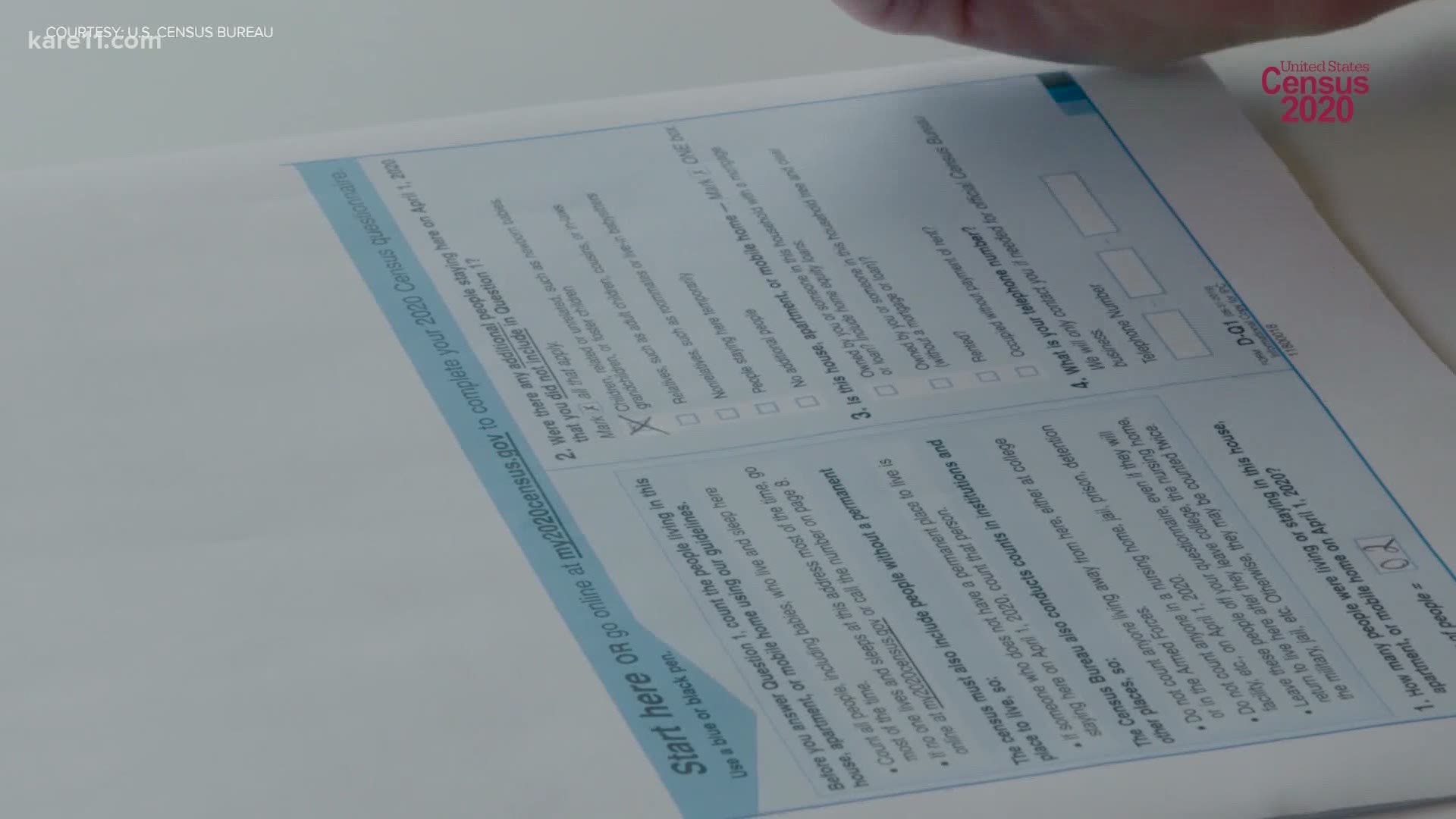MINNEAPOLIS, Minnesota — For the 2020 Census, Minnesota so far has the highest self-response rate in the country at 72.6%. The national average is 63.4%. But 1 in 4 Minnesotans have yet to complete their forms.
"It's important that every Minnesotan get counted for many reasons.... for your neighborhood, for your city, for your county. It determines the quality of the roads in your area, the quality of the schools in your area," said Andrew Virden, director of census operations and engagement for the state of Minnesota.
Every year, billions of dollars in federal funding go to hospitals, schools and roads, among other things based on the census data. It's also used to help shape political representation. The count is done every 10 years.
"Following the 2020 Census, there will be a redistricting for the entire state of Minnesota," Virden said.
But census takers have the challenge of getting the final 27.4% of Minnesotans to respond by September 30.
On Tuesday, census takers started door knocking across Minnesota at households that have not yet responded. Door knocking started in Minneapolis last week.
"There are certain characteristics that makes an area more difficult for people to be counted. One is a prevalence of renters is a huge issue, children under 5, college-aged students, communities of color, low-wealth communities, limited English proficiency or limited educational attainment are all challenges, as well," Virden said.
Rodolfo Gutierrez with the nonprofit Hispanic Advocacy and Community Empowerment through Research (HACER) said they've been working hard to inform the Latino community about the census. Gutierrez said it's been a challenge after there was talk of adding a citizenship question. The Supreme Court blocked that from happening and there is no citizenship question on the 2020 Census. But Gutierrez still gets calls about it.
"If we don't count, we might run the risk of not having those services to our neighborhoods," Gutierrez said. "If we are not all counted, we might lose a seat in the Congress which is not something we want to see happening."
Information on the census is confidential for 72 years.
"The census takers are sworn to secrecy for life to hold that secret and it carries with it a rather large fine—$250,000 fine and five years in federal prison if they violate that," Virden said.
Census takers now door knocking will follow public health guidelines, including wearing a mask and social distancing. They will stand outside the front door of the person's home or in the hallway for an apartment. Census takers can be identified by a valid government ID badge with their photograph, a U.S. Department of Commerce watermark, and an expiration date on the badge.
"Census workers are required to give you their name and their badge number, as well as confirmation number that you can call to verify whether or not that person is a census taker or not," Virden said.
You can find more information on identifying a census worker, here.
If a census taker does not speak the householder's language, the household may request a return visit from a census taker who does.
Lake areas tend to have lower response rates because of the number of lake cabins and seasonal homes. For example, Cass County currently has a response rate of 36%. That means census takers will have to visit a majority of the homes in that county.
Minnesotans who own a second home need to complete the 2020 Census for that second home. If no one usually lives or sleeps at the address, answer zero for number of people in the household.
The U.S. Census Bureau asks that if a census taker visits your home, you answer their questions. If no one is home when the census taker visits, they'll leave a notice of their visit with information about how to respond.
Those who haven't completed the 2020 Census and would like to avoid a visit from a census taker, may respond to the census on their own.
It can be done online, here, or call 844-330-2020. Phone lines are open 6 a.m. to 1 a.m., seven days a week.

